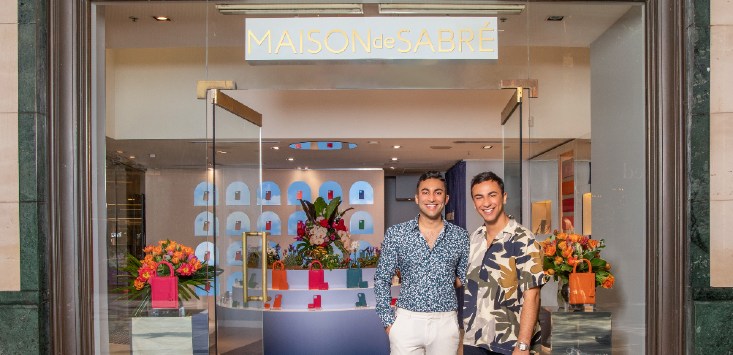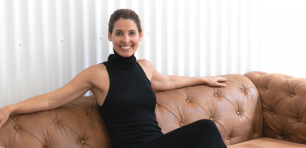
MAISON de SABRÉ co-founders Zane and Omar Sabré. Source: Supplied
Premium personalised leather accessories brand MAISON de SABRÉ has launched a Sydney pop-up store in collaboration with Sony.
Located in Pitt Street Mall in the CBD, it is the e-commerce company’s first and only retail store worldwide.
MAISON de SABRÉ was founded by Gold Coast brothers Omar and Zane Sabré in 2017. With more than 100,000 customers worldwide in 2019, the online-only retailer hit $10 million in revenue in its second year, with year-on-year average growth over 500%.
It sells one of its premium leather pieces every two minutes online, across 130 countries. Its biggest international markets are the US and Japan, working with a wholesale retailer for the latter.
The value of physical stores for luxury brands
When customers are spending several hundreds or thousands on a product, it is crucial that they can understand the quality of the goods to link the value and cost equation.
Gary Mortimer from the Queensland University of Technology business school tells SmartCompany that, “when consumers have touched and felt the brand, engaged with the experience, they’re more inclined to purchase online”.
It’s all about establishing a level of trust.

Inside the MAISON de SABRÉ store. Source: Supplied
Why luxury brands are picking pop-ups over flagship stores
Luxury brands are increasingly looking to pop-up stores as alternatives to flagships, which have been the de facto standard for decades.
The usual model is a flagship store in a CBD area, Mortimer explains, which gives businesses access to a target audience with a high discretionary spend. In Australia, this typically means Melbourne or Sydney.
These stores can miss out on the small groups of consumers in regional areas, and smaller cities. This includes places like the Gold Coast, tourist strips like Cairns, and smaller CBDs including Adelaide or Perth.
Pop-ups, by comparison, can easily be moved around the country, letting customers experience your brand in person without needing to travel. As one example, Louis Vuitton opened a pop-up store at Pacific Fair on the Gold Coast in April.
“These enable luxury brands to connect with a broader audience of consumers without having to undergo the cost of a full-store fitout”, says Mortimer.
The first benefit is the initial cost outlay. While fitting out a full-flagship store in a CBD area can cost up to $700,000, luxury brands can instead spend around $200,000 to develop a pop-up business that they can move around the country at low cost.
Conversely, the $700,000 fitout remains static at one location for generally 10-15 years, says Mortimer.
What sets apart quality pop-up stores
There are a few key elements that need to be considered for luxury pop-ups, according to Mortimer.
For high-quality products, you need a premium fitout, with fully-trained staff and consideration given to things such as uniforms and styling.
Then, there are “atmospherics such as sound, music, air conditioning, display cabinets, colour schemes, pantones,” says Mortimer.
Inspired by nature, MAISON de SABRÉ’s pop-up includes dynamic visual projections and sounds from the Australian landscape, through its collaboration with Sony. It also evolves on a monthly-basis, giving customers a new experience when they return.
Omar Sabré says, “It’s a place where we can connect directly with our community and customers.”
“Our vision was to explore the connection between the natural world and technology in store by blending our digital foundations in this exciting new concept.”
Handpicked for you

“Why would you shop another way?”: Mys Tyler bags $1 million for personalised styling platform



COMMENTS
SmartCompany is committed to hosting lively discussions. Help us keep the conversation useful, interesting and welcoming. We aim to publish comments quickly in the interest of promoting robust conversation, but we’re a small team and we deploy filters to protect against legal risk. Occasionally your comment may be held up while it is being reviewed, but we’re working as fast as we can to keep the conversation rolling.
The SmartCompany comment section is members-only content. Please subscribe to leave a comment.
The SmartCompany comment section is members-only content. Please login to leave a comment.